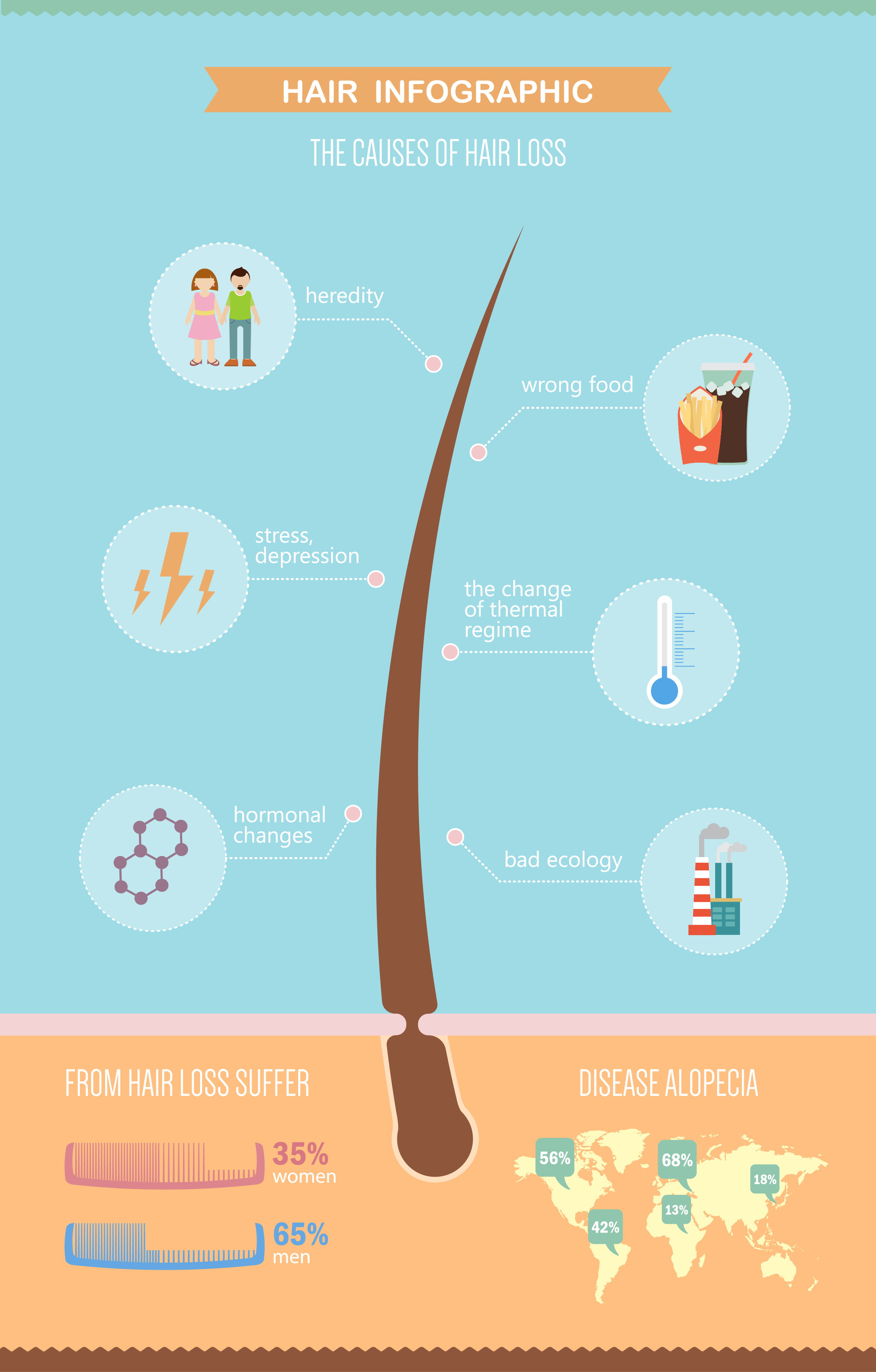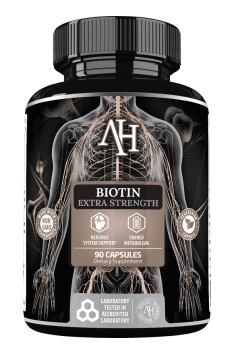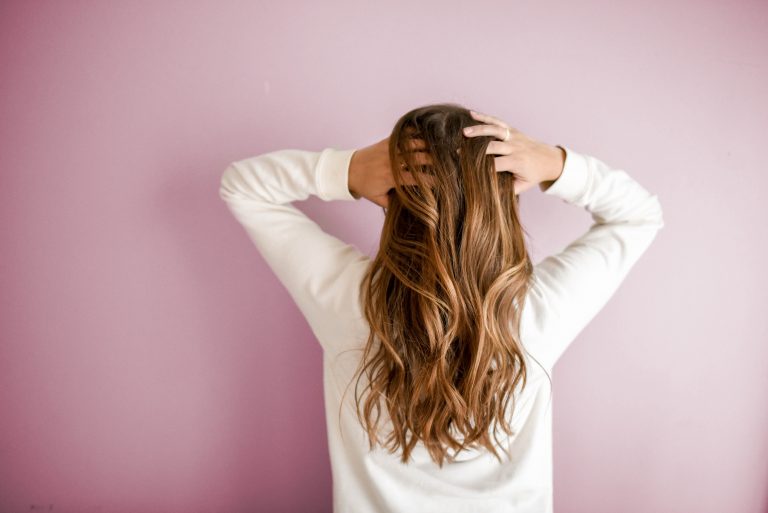Introduction
The hair on our head is our crowning glory! We strive to have thick lustrous hair that looks and feels healthy. Our hair is very personal to us and we all have different types, colours and amount of it. As we age it changes colour and condition. Some of us lose our hair as we get older as is common for some men and women, and it can affect how we feel about ourselves. Some people undergoing cancer treatment such as chemotherapy can lose their hair as a result of the medication taken, other people can lose their hair though trauma or particular skin conditions. Others lose hair due to genetic factors.
In general, our hair ‘thins’ as we age, so it becomes more and more important to take care of it if we want to reduce the adverse effects age has on our hair condition and thickness. There are many topical products on the market that make claims that they can reduce hair loss or improve condition of our hair, and it is a massive business for personal homecare companies.
Hair can undergo a vast amount of treatments as we age, such as colouring with natural or synthetic dyes, various different shampoos and conditioners are applied regularly, some people even undergo so called hair transplants. It’s fair to say that most people want their hair to look and feel good, whatever their preference is for different treatments.
Structure of hair
Hair structure is made up of three main sections:
- The hair bulb, which is located at the base of the dermal layer of skin, where it gains access to blood vessels.
- The hair follicle which extends from the hair bulb through the dermis and epidermis, and grows by being supplied with nutrients from blood vessels supplying the hair bulb. Sebaceous glands ensure the hair follicle is lubricated with oil.
- The hair shaft. This section of hair is the one we see, after it has pierced through the epidermis.
The hair shaft is made up of the protein keratin, but a strand of hair has several layers to it:
- The outer most layer known as the CUTICLE is made up of flat thin cells that overlap each other
- The next layer is known as the CORTEX, which contains the protein keratin
- The innermost section known as the MEDULLA, is an open unstructured region.

Hair growth
The only ‘living’ part of hair is at the hair bulb section of the hair follicle. It is from here that hair receives nutrients and grows. The hair shaft is considered ‘dead’ as no biochemical functions take place within it. Hair follows a specific growth cycle:
The anagen phase is the active growth period that can last from 2-7 days where hair is actively growing. At the end of this phase the hair follicle enters a period of transition for about 2-3 weeks known as catagen, followed by a resting phase known as telogen which can last around 3 months for the hair on our head. Our hair also goes through a shedding phase known as exogen. This occurs at any time for many different reasons. When the body is subjected to extreme stress up to 70% of our hair can fall out.
Hair growth cycles are controlled by biochemical functions such as growth factors, immune cells and hormones, and as we are all individuals our hair can behave very differently from person to person.

Food and nutrients to keep hair healthy
Protein
Keratin is the name for a family of structural proteins present in skin, hair and nails amongst other cells and known for its strength. It is rich in the amino acid cysteine, but also contains arginine, lysine and methionine. We can obtain these amino acids from our diet and can be found in most protein rich foods such as; animal sources e.g. beef, chicken, pork, fish, eggs, dairy products etc., plant sources such as beans, lentils, wholegrains, seeds and nuts, tofu and hummus.
In the UK it is recommended that adults consume 0.75 g of protein for every kilogram they weigh. So if you weigh 70 kg (11 stone) then your recommended nutrient intake (RNI) is 52.5 g of protein a day. A 130 g chicken breast contains about 39 g protein, 105 g beef contains about 31 g protein, a handful of roasted peanuts (50 g) contains about 12 g protein, about 140 g chickpeas contains 12 g protein, 205 g baked beans contains 10 g protein, 100 g tofu contains 8 g protein, and two slices of wholemeal bread contains about 6 g protein. If you are vegetarian or vegan, you need to take care to consume enough foodstuffs to provide your RNI of protein, as non-meat sources of protein tend to be lower weight for weight.
It is not only important to ensure our protein intake is at recommended levels to support healthy hair, but our intake of vitamins and minerals need to be optimal. If our diet is lacking in macro and micro nutrients then our hair is the last to receive this nutrition, hence why the condition of our hair suffers and can fall out if we are malnourished.
Zinc
This mineral plays a key role in the healthy functioning of sebaceous glands which provide lubricating oil to the hair follicle. It is also a key nutrient for our general health, and is involved in many different chemical reactions, so a deficiency can cause hair to suffer and result in possible hair loss. Zinc is found in meat and fish such as beef, kidney, liver, oysters, crab, as well as plant based products such as green leafy vegetables, seeds, lentils and wholegrains.

Other minerals
Whilst zinc plays a key role in maintaining a healthy head of hair, other minerals are also important. Iron, copper, selenium, magnesium, calcium and silicon all have a role in keeping our hair healthy. Key dietary sources of these minerals are animal based products for iron and copper, although vegetarians and vegans can obtain iron from green leafy vegetables, tofu, beans and lentils, dried apricots, figs and wholegrains. For the others a diet rich in nuts and seeds, wholegrains, dairy products, green leafy vegetables, apples, bananas, mango and apricots are all important.
Biotin
This B vitamin appears on many supplements for healthy hair, skin and nails, but there is very little scientific evidence to prove that it plays an active role in supporting the health of our skin, hair and nails. However, there is evidence to suggest that it does play a role in keratin infrastructure. Biotin deficiency seems to be rare, but can result in hair loss if our intake is too low. Foods rich in biotin include, pork, salmon, egg yolk, nuts, beans, mushrooms, wholegrains, raspberries and bananas.
Vitamins
Many vitamins support healthy hair. Vitamins A, B group, C and D all play a role in ensuring our hair stays healthy. A diet rich in fresh fruit and vegetables, wholegrains and protein can provide all major vitamins. It’s important to have a varied consumption of foodstuffs to ensure all nutrients are captured. The best source of vitamin D is through sunlight on the skin. If possible, try to get maximum 10-15 minutes’ exposure to sunlight every day (on a sunny day) without sunscreen to ensure your stores of vitamin D are maintained. Failing this, consider taking a supplement of 10 micro grams per day.
Overconsumption of foods and nutrients that can cause hair issues
Fats
Whilst unsaturated omega-3 fatty acids are essential for good health, over consumption of saturated fats can cause over production of oil from sebaceous glands causing hair to look and feel oily and lank. Sources of ‘good fats’ are oily fish such as salmon and mackerel, flaxseeds and linseed oil. Saturated fats found in butter, and other animal sources should be limited in the diet.
Sugar and highly processed foods
Whilst carbohydrates are important for energy, it’s best to stick with complex carbohydrates high in fibre, such as wholegrains (bread, pasta, rice), vegetables such as potatoes, beans, lentils. Over consumption of simple sugars and highly processed foods in our diet are an indirect cause of hair loss, by overproduction of sebum leading to irritation and weakening of the hair shaft, insulin resistance causing poor blood flow to the hair bulb and damage to the hair follicle. We should try to limit or avoid consumption of highly processed foods such as ready meals, and sugar, which is present in many processed foods such as carbonated drinks, sweets, chocolates, white bread, pasta and rice.
Milk and dairy products
Whilst these foodstuffs are generally healthy they can exacerbate some skin conditions such as eczema and dandruff. So care must be taken if you suffer generally from these skin conditions and you are consuming dairy products.
Conclusions
If you would like to ensure your diet is optimised to keep your hair looking and feeling healthy I would recommend a diet that ensures daily protein levels are reached, either via animal or plant sources. Eat plenty and a variety of vegetables and fruit – try to get at least 5 portions a day. Eliminate processed foods such as ready meals from your diet as much as possible and replace white bread, rice and pasta with wholegrain sources. Your fibre intake should be 30 g per day. Reduce your intake of sugar from sweets, cakes, drinks etc., and only have sweet products as an occasional treat. Eat good fats (omega-3) from oily fish or flaxseeds and linseed oil, but keep saturated fats levels to a minimum. If you suffer from eczema take care to reduce trigger factors such as dairy products.







One Comment